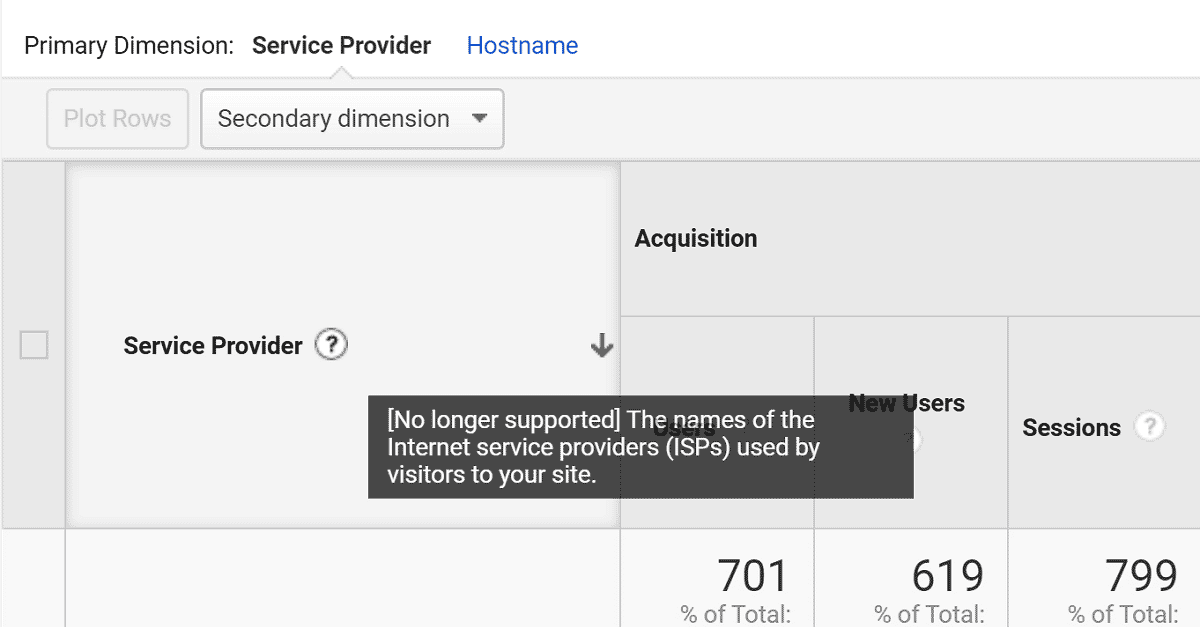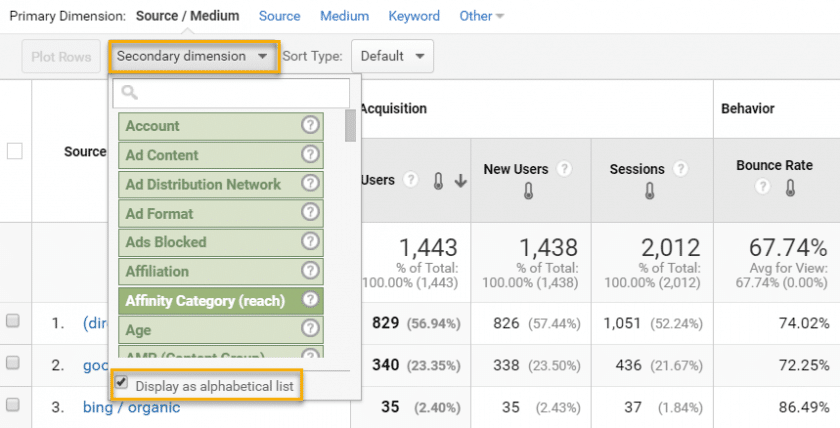Deep Study the 'Secondary Dimension' in Google Analytics: Everything You Need To Recognize
Deep Study the 'Secondary Dimension' in Google Analytics: Everything You Need To Recognize
Blog Article
Browsing the Depths of Second Measurement in Google Analytics: A Comprehensive Exploration on Its Performance
In the realm of electronic analytics, the ins and outs of data interpretation frequently hold the trick to opening useful insights. Within the large toolkit of Google Analytics exists a feature that acts as a concealed treasure for those that seek a much deeper understanding of user actions and site efficiency. Additional dimensions, though relatively straightforward initially glance, harbor a riches of untapped potential waiting to be used. As we begin on this trip to explore the nuanced performance of secondary dimensions, we will reveal exactly how this function can light up patterns, introduce connections, and ultimately lead the means for educated decision-making in the electronic landscape.
Understanding Secondary Dimensions in Google Analytics

Understanding exactly how second dimensions work is important for leveraging the full power of Google Analytics. These measurements assist you respond to extra intricate concerns concerning individual behavior and the performance of your website material and marketing initiatives. For instance, you can use second measurements to assess which tools or browsers are most commonly utilized by site visitors who purchase, or to compare the bounce prices of various web traffic resources. By integrating key metrics with secondary measurements, you can gain important insights that drive informed decision-making and optimization approaches - what is a “secondary dimension” in google analytics?.
Leveraging Additional Dimensions for Data Analysis
Building upon the foundational understanding of exactly how secondary dimensions improve information evaluation in Google Analytics, the application of these additional layers of details ends up being extremely important in extracting valuable insights for educated decision-making and optimization approaches. By leveraging second measurements, experts can dive much deeper right into the performance metrics by adding more context to the main dimensions, therefore uncovering hidden patterns and relationships that could not appear at very first glimpse. This deeper level of analysis allows services to much better recognize customer habits, identify patterns, and pinpoint areas for improvement.
In addition, second dimensions give an even more detailed view of the data, enabling division based upon different criteria such as demographics, tools, traffic resources, and a lot more. This segmentation promotes a more granular analysis, allowing organizations to tailor their approaches and campaigns to particular audience sectors for boosted targeting and customization. Basically, the tactical use additional measurements equips companies to make data-driven decisions that drive development and success in the electronic landscape.
Advanced Methods for Additional Measurement Execution
Discovering complex methods to harness the full possibility of additional dimensions in Google Analytics elevates the depth and class of data evaluation for critical decision-making. One sophisticated method for applying second dimensions is the usage of custom-made dimensions. Additionally, incorporating secondary measurements with innovative segments can give even much more granular insights by using several layers of division to the information.
Interpreting Insights Through Second Measurements

When interpreting understandings via secondary dimensions, it is important to consider the context original site of the data and just how various measurements communicate with each other. For instance, understanding which specific website traffic resources cause greater conversion click for info rates or determining which tools users choose for making acquisitions can offer actionable insights for enhancing marketing projects and improving overall internet site efficiency. By carefully analyzing the data with second measurements in mind, organizations can make enlightened decisions that drive purposeful outcomes and improve their digital existence.
Maximizing Performance With Second Dimensions

One crucial method to optimize efficiency with secondary dimensions is by segmenting information more granularly. This enables you to isolate details factors that might be affecting your metrics and acquire a better understanding of what drives success or failure in your electronic efforts. By integrating secondary dimensions such as 'tool classification' and 'touchdown page,' you can identify which gadget types are most reliable for specific landing pages, allowing you to customize your strategies as necessary.
Furthermore, utilizing secondary dimensions can assist you determine patterns, patterns, and relationships that may not be noticeable when assessing information with primary measurements alone. This deeper degree of analysis can cause more educated decision-making and eventually enhance the total efficiency of your website or digital marketing campaigns.
Verdict
In final thought, secondary dimensions in Google Analytics play a crucial role in enhancing data evaluation and providing much deeper insights into site performance. By making use of sophisticated methods and interpreting the information successfully, services can maximize their approaches and enhance overall efficiency. Recognizing the performance of secondary dimensions is crucial for making notified decisions and driving success in the electronic landscape.
By leveraging second measurements, experts can delve much deeper right into the efficiency metrics by adding even more context to the primary measurements, thus revealing covert patterns and relationships that might not be noticeable at very first look. One innovative technique for applying additional dimensions is the usage of custom dimensions.Having grasped advanced strategies like customized dimensions and regex for second measurement application in Google Analytics, the next important action is analyzing the useful understandings acquired with these innovative data segmentation techniques. Interpreting understandings with secondary dimensions involves evaluating the relationships between the primary and secondary measurements picked, uncovering patterns, patterns, and relationships that may not be promptly evident when looking at the data in its whole.When translating insights with additional dimensions, it is important to take into consideration the context of the information and how various additional hints dimensions connect with each other.
Report this page